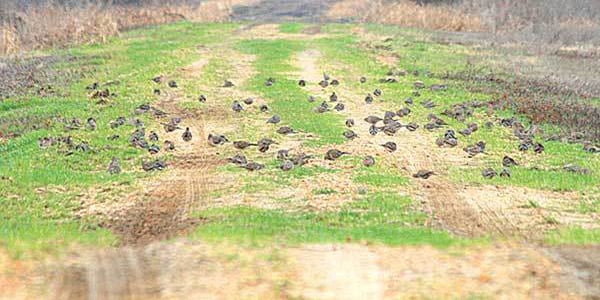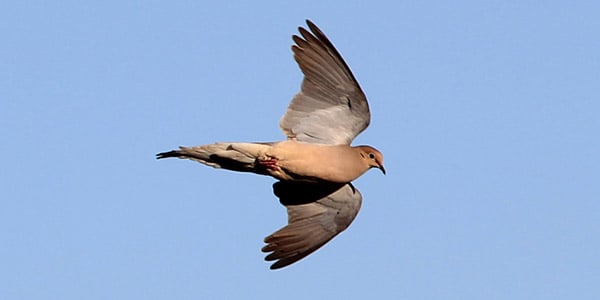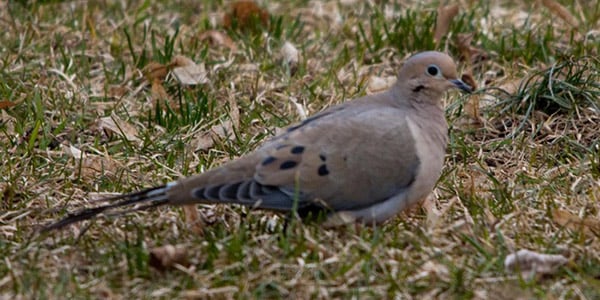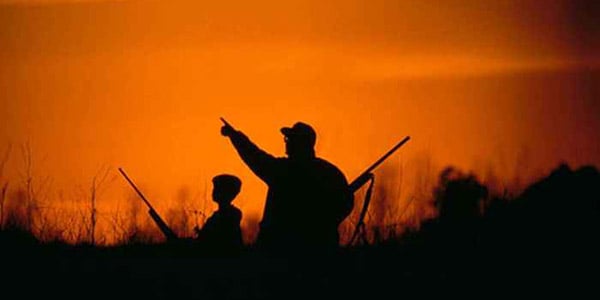
Did you know that more Americans shoot a gun on the opening day of dove season than any other day of the year? In Texas alone, over 250,000 people will take aim. With more and more states opening a dove season every year, this busy hunting day will only get busier.
So how do give yourself the best chance of bagging your limit this season? Although the use of good tactics and hunting gear can give you a great advantage, an understanding of the general habits and dove flight paths might be the best tool you can bring to the field.
Scouting
Before you can dig deeper into the specific flight paths the dove will take over a specific field, you should spend some time scouting for the best hunting spot possible. Your best bet will always be recently-harvested crop fields, but there are many different variables to consider when choosing a dove hunting spot.
If you can find a field that also offers water and nearby roosting areas, you may have hit the jack pot! Once you find a solid option for opening day, you should ensure that the field is legally compliant with your state’s regulations (see here for regulations in Texas), and that you have full permission to hunt the land. Spend some time observing the best shooting times and typical dove flight paths over the field.
Dove Flight Paths
Anyone who has ever been dove hunting knows the importance of dove flight paths. In a large field, you could see hundreds of doves flying, but if you’re too far from their flight paths, you may never take a single shot. Hopefully, by the time opening day arrives, you have had time to scout your field to get an idea of the most commonly used flyways. However, a general understanding of dove habits and why they choose certain dove flight paths over others will give you a great head start.
Knowing Your Basics
When it comes down to the basics, dove need three essential things. Safe trees to roost in, water to drink and small seeds or grains to feed on. They travel between these three components to get what they need to survive. If the dove’s feeding grounds are close to their roosting trees, the first flight they will take in the morning will most likely be towards those feeding grounds. In many cases, dove will stop to rest and scout for danger in dead trees, especially at the corners of a food plot or grain field.
Doves usually fly directly and swiftly from one point to another, with a purposeful demeanor that is easy to identify. They prefer to travel along lines of least resistance, such as over open fields or water bodies, and they tend to avoid thick forests or dense shrubs. They also frequently use landmarks such as tree lines, power lines, or other physical structures as navigation aids.
Although dove only need to drink every few days, they may go once or twice a day to drink when the conditions are right. Stock tanks with wide, muddy banks are some of the dove’s favorite watering holes. Dove will most often fly directly from the feeding grounds or from a resting tree to the water.
Feeding Habits
Dove are primarily ground feeders with a diet focused almost solely on seeds. They prefer tilled corn, wheat, grasses, grains and sunflowers. Plants that offer protein-rich, oily seeds such as millet, sorghum and especially black sunflowers are the dove’s favorite. Fields that have been recently knocked down and offer abundant landing areas do best. When scouting for dove hunting fields, look for areas with these types of food.
Roosting Spots
Doves roost in trees during the night, and these roosting spots are another important aspect to consider in dove scouting. Doves generally prefer trees that provide ample cover, such as evergreens. They also tend to roost in the same area repeatedly, which can make these spots easier to identify over time.
Other Dove Flight Path Tendencies
Dove also need gravel and grit to help them digest grains. They love the gravel roads commonly found in rural areas. Dove typically fly between the grain fields to these rural roads after feeding to fill their gizzards. Dove hunters should consider all of these elements when trying to find the best shooting spot. If you notice an area of woods where dove gather to roost near your field, you should choose an area directly in between these trees and the field. If your hunting area includes a stock tank, you can set up another group of hunters between the roosting trees and the water or the field and the water.
It is also important to look for slot or prominent drops in the timber line around the field. When flying into or out of an open field area, dove prefer to use gaps in the taller trees. Positioning yourself around these gaps will usually give you more shooting opportunities. Field corners also represent natural magnets for flying dove.
Dove also tend to congregate on small hills or high spots in a feeding field. These spots allow the dove to more easily watch for danger from the ground. Dove can identify even the slightest change in elevation when flying, so a rise of even ten inches or so can be a natural magnet for these birds.
A Great Tradition
Dove hunting offers some unique hunting opportunities for families and friends to gather in generally comfortable whether for some shooting. For many, the opening day of dove season is a favorite multi-generational tradition, and many of the youth hunters across America get their first hunting experience during dove season.
Dove provide an excellent sport shooting experience without the miserable weather, required gear and knowledge that come with many other forms of hunting. However, dove hunters who take the time to understand the common dove flight paths and other habits of these birds have a greater chancing of filling their limit, and when it comes time to enjoy a fried dove dinner with family and friends, everyone will thank them for their efforts!
If you are interested in hunting, we have a whole series of articled dedicated to the game calls:
FAQs
A youth shotgun typically has lighter weight, shorter barrel length, and a smaller length of pull, making it easier for younger shooters to handle and control.
A 20-gauge shotgun usually has less recoil than a 12-gauge, making it more manageable for younger or smaller-framed shooters. It still provides sufficient power for most hunting scenarios.
The length of pull is the distance from the trigger to the end of the gun’s buttstock. It’s important in youth shotguns because a shorter length of pull makes the gun easier to shoulder and aim for a young shooter.
An adjustable length of pull system allows you to change the distance from the trigger to the end of the buttstock. This is beneficial for young shooters as it allows the gun to grow with the shooter, ensuring a comfortable and effective fit over time.
The Stoeger Uplander Youth shotgun comes with improved, modified, and full choke tubes. These can help adjust the spread of the shot to suit different hunting situations.
Hardwood stocks are traditional and typically more aesthetically pleasing, but they can be heavier and may not withstand harsh weather as well as synthetic stocks. Synthetic stocks are lighter and more durable, but some people prefer the feel and look of wood. Neither is objectively better; it depends on personal preference and needs.
When choosing a youth shotgun for hunting, consider the shooter’s size and strength, the gun’s weight, length of pull, gauge, and recoil, as well as the intended game. A lighter gun with less recoil is typically more suitable for small game, while larger game might require a more powerful gauge.








Leave a Reply